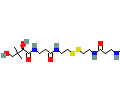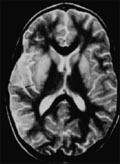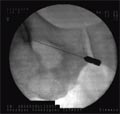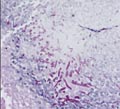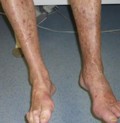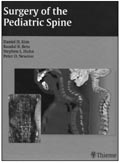The eLitMed.hu medical portal uses computer cookies for convenient operation. Detailed information can be found in the Cookie-policy.
Clinical Neuroscience - 2009;62(07-08)
Content
[Current medical aspects of pantethine (in English language)]
[Pantethine, the stable disulfide form of pantetheine, is the major precursor of coenzyme A, which plays a central role in the metabolism of lipids and carbohydrates. Coenzyme A is a cofactor in over 70 enzymatic pathways, including fatty acid oxidation, carbohydrate metabolism, pyruvate degradation, amino acid catabolism, haem synthesis, acetylcholine synthesis, phase II detoxification, acetylation, etc. Pantethine has beneficial effects in vascular disease, it able to decrease the hyperlipidaemia, moderate the platelet function and prevent the lipid-peroxidation. Moreover its neuro-endocrinological regulating role, its good influence on cataract and cystinosis are also proved. This molecule is a well-tolerated therapeutic agent; the frequency of its side-effect is very low and mild. Based on these preclinical and clinical data, it could be recommended using this compound as adjuvant therapy.]
[Pompe’s disease - Part I - Pathogenesis and clinical features]
[Pompe’s disease is an ultra-orphan disease caused by the deficiency of lysosomal alpha-glucosidase. At present, it is the only inherited muscle disorder, which can be treated by replacement of the enzyme. According to the natural course, early infantile and late childhood-juvenile-adult cases are known. Respiratory insufficiency, cardiomyopathy, and muscle hypotonia are cardinal symptoms/signs in infantile Pompe’s disease, while cardiomyopathy is absent in adult-onset cases. CK levels are always elevated in the sera of infantile patients. Hip-girdle dystrophy and orthopnoe should alert suspicion in adult patients. Diagnosis is established by decreased activity of the enzyme or mutational analysis. Muscle biopsy can be misleading in adult cases due to absence of glycogen in the examined specimen. In this review, we also discuss our experiences obtained by the treatment of three patients.]
[Acute disseminated encephalomyelitis in childhood]
[Background and purpose - Acute disseminated encephalomyelitis is a rare inflammatory demyelinating disorder often preceded by infection or vaccination. The purpose of the study was the systematic analysis of clinical, radiological and microbiological profiles of children treated at Szent László Hospital, and the comparison of findings with literature data. Methods - Demographic, infectological, clinical, radiological, laboratory and virological data of patients treated and followed-up between 1-Jan-1998 and 30-June-2008 were reviewed and analysed. Results - 19 children met diagnostic criteria. Their mean age was 6.8 years. A prodromal illness - mostly febrile viral infection, upper respiratory infection or chickenpox - preceded neurological symptoms in 17 patients. All had polysymptomatic encephalopathy, 2 children had spinal symptoms. The cerebrospinal fluid was abnormal in all but one. A viral etiology was definite in 7 and probable in 8 cases. MRI disclosed white matter changes in 18, cortical and deep gray matter in 16, cerebellar in 6, brain stem in 14 and spinal cord changes in 2 cases. Repeat MRI performed mean 4 months later showed complete resolution in 6 and partial resolution in 11 patients. 13 patients received high-dose methylprednisolone, 2 of whom were also treated with plasma exchange and 1 with immunoglobulin. 9 children required mechanical ventilation. 2 patients died, 10 recovered without and 7 with sequelae. 2 patients developed further demyelinating events: multiple sclerosis and multiphasic disseminated encephalomyelitis, respectively. Conclusion - Clinical, radiological and follow-up results were similar to those published in literature however, triggering viruses were identified in a larger proportion of cases.]
[Factors affecting the development of chronic hydrocephalus following subarachnoid hemorrhage]
[Hydrocephalus is a common complication of aneurysmal subarachnoid hemorrhage. Numerous studies have dealt so far with the triggering cause of the chronic cerebrospinal fluid (CSF) absorptional and circulatory disorders. Despite the fact that these studies gave several different explanations, most of them agreed on the fact that the obstruction of CSF pathway has a crucial role in the development of the clinical feature. By examing three years’ clinical cases they the authors were trying to find out which are the factors that influence the development of the late hydrocephalus which succeeds the subarachnoid hemorrhage; moreover to find out if the incidence of the latter may be decreased by a continuous drainage of CSF which advances its purification. One hundred and seventy-one patients (one hundred and twenty-seven females) were treated by aneurysmal SAH at Department of Neurosurgery, University of Szeged between 2002 and 2005. The following parameters were recorded: gender, clinical state, risk factors (smoking, consuming alcohol and hypertension), the method and the time of surgical treatment as well as CSF drainage. The studies have shown that the risk of incidence of chronic hydrocephalus’s incidence were higher in men and in case of severe clinical state with severe SAH. The disturbed CSF circulation and/or absorption were positively correlated with consuming alcohol and hypertension, while smoking did not affect it. The rate of the incidence of chronic hydrocephalus among our patients was lower (5.8%) compared to the results of other studies (7-40%) suggests that disturbance of CSF circulation and/or absorption may be avoided in the majority of cases by continuous external ventricular or lumbar CSF drainage, which is applied routinly.]
[The role of neurolytic obturator nerve block to relieve pain due to cancer and osteoarthritis (in English language)]
[Neurolytic obturator nerve block have been performed successfully to relieve pain due to osteolytic metastases of pelvic bone since 1981 in our Pain Clinic. The analgesic effect of one block lasts from three to four months and can be repeated as required. Following the block the patient can go home one hour later. In 2008 we started to perform the neurolytic obturator nerve block to relieve pain due to degenerative osteoarthritis of hip joint. It is a good choice for those patients, who are not enough fit to be operated, or during the waiting time of hip replacement surgery.]
[Removal of multiple thoracic dumbbell tumours through combined hemi-semi laminectomy and minimal invasive paraspinal approach]
[One third of the primary spinal tumours are neurinomas. These tumours most often located intraduralyextramedullary, but 15-25 percent of the cases, the tumour extends to the paraspinal region through the neuroforamina. Spinal manifestation of Schwann-cell tumours, usually neurofibromas, can be seen in neurofibromatosis. 31 years old female patient, suffering from NF1 was operated on with a Th 3-6 and Th 10-11 dumbbell tumours. At the first step the tumour mass, located in the spinal canal, was resected through a partial hemilaminectomy. At the second operation the extraspinal tumour was resected through a minimal invasive paraspinal approach. The author present the combined use of minimal invasive spine surgical technics and discuss the benefits and disadvantages of these approaches, compared to the standard surgical procedures.]
[Non-obstructive hydrocephalus internus with a rare pathogenesis - mucormycosis]
[The case of a 9-year old boy is presented in this article who developed a rare fungal infection of central nervous system. The histopathologic examination has revealed mucormycosis. The diagnosis wasn’t confirmed microbiologically as the culture and PCR were negativ. After the iv administered Amphotericin B lipid complex the MR images of the brain have improved. The mucormycosis classically develops in immunodeficient patients and presents an acute, fulminant, mostly lethal infection. This case is very unusual, because the chronic, isolated CNS mucormycosis has slowly developed in immuncompetent patient and only one symptom was the long existing headache. The aim of this paper is reporting the case history and to find out the possible way of infection.]
[High resolution sonography for the examination of peripheral nerves in vascular neuropathy]
[High-frequency sonography is a new method for the imaging of the peripheral nerves. In vasculitic neuropathy, pain or axonopathy can often prevent the lesion to be localized during electrophysiological examinations. There are only few informations in the literature about the ability of the sonography for localizing lesions in vasculitic neuropathy. High-frequency sonography helped in our two cases of mononeuritis multiplex and two cases of distal-symmetric polyneuropathy to put the diagnosis of a vasculitic neuropathy and was able to detect focal morphologic lesions which could not be identified electrophysiologically due to the axonopathy.]
[Expert opinion on opioid therapy of non tumorous pain]
[Expert opinion on opioid therapy of non tumorous pain 2009;62(07-08)]
1.
Clinical Neuroscience
[Headache registry in Szeged: Experiences regarding to migraine patients]2.
Clinical Neuroscience
[The new target population of stroke awareness campaign: Kindergarten students ]3.
Clinical Neuroscience
Is there any difference in mortality rates of atrial fibrillation detected before or after ischemic stroke?4.
Clinical Neuroscience
Factors influencing the level of stigma in Parkinson’s disease in western Turkey5.
Clinical Neuroscience
[The effects of demographic and clinical factors on the severity of poststroke aphasia]1.
2.
Clinical Oncology
[Pancreatic cancer: ESMO Clinical Practice Guideline for diagnosis, treatment and follow-up]3.
Clinical Oncology
[Pharmacovigilance landscape – Lessons from the past and opportunities for future]4.
5.
